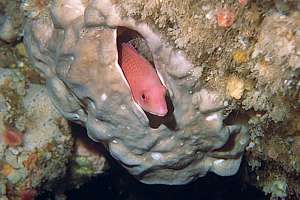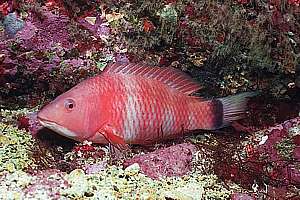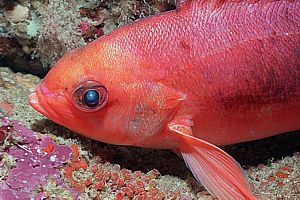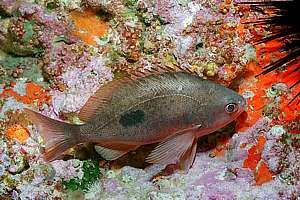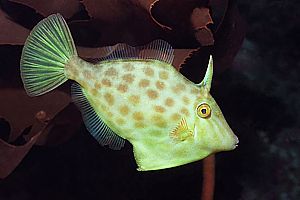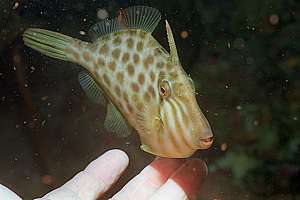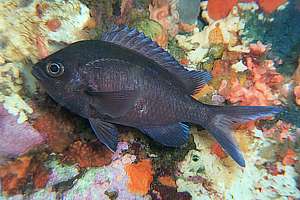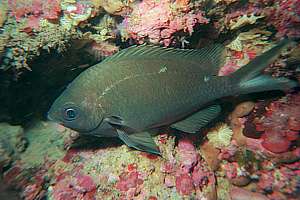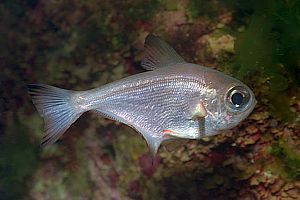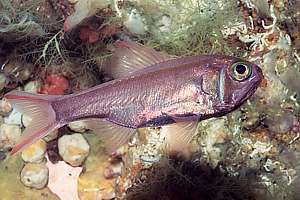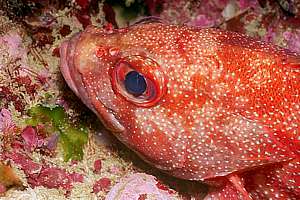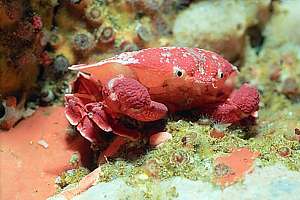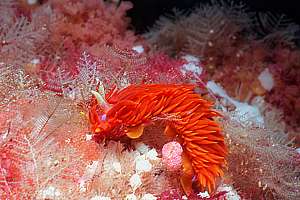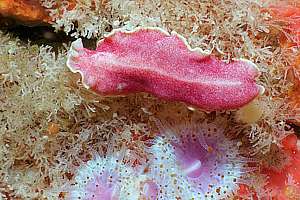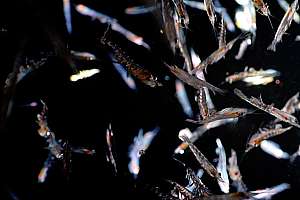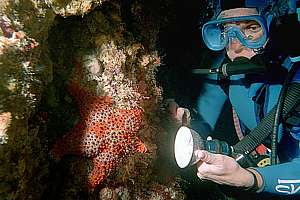What are the best spots for nightdiving
at the Poor Knights?
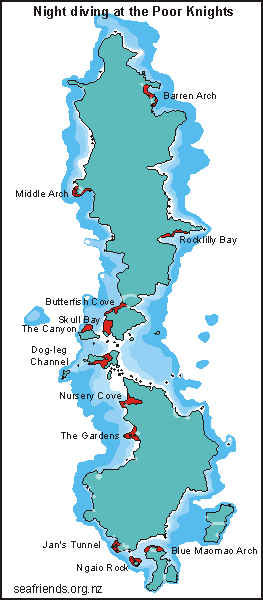 Those
who studied the best spots for snorkelling, will no doubt notice that those
same spots are also best for night diving, but there are a few more: Those
who studied the best spots for snorkelling, will no doubt notice that those
same spots are also best for night diving, but there are a few more:
-
Barren Arch: in conditions of calm at the east coast, Barren Arch
is an ideal place for overnighting. With the boat stationary, and a day
dive preceding the night dive, a good night dive can be had. But the lay
of the land can be confusing at night. The northern cove, which is also
the most shallow, is where the boat will anchor, and from here a good night
dive can be had, even over the rocky bottom and along the walls there.
The arch can not always be entered from the shallow side, and one needs
to find it, going around the outside to the deep end, and back again, which
takes precious time.
-
Rocklilly Bay: surprisingly, a good night dive can be had on its
northern side which is sheltered from NE swell and storms. The beautiful
rock life begins a little deeper than on the west coast, but between 10
and 15m a very colourful community can be found.
-
Middle Arch: we give Northern Arch a miss because of its unpredictable
currents and very deep bottom, but for experienced divers it can still
be done in favourable conditions. By comparison, Middle Arch is much safer,
and also more interesting for night diving as it has more habitats closer
together. It is a very colourful dive with astounding sessile life in shallow
water.
-
Butterfish Cove and Maomao Arch: although the bottom is 40m deep,
the walls are tranquil and rich in life. Watch out for currents in Maomao
Arch. There are large boulders in the cove, tall seaweeds outside, and
here and there a small cave.
-
Skull Bay: a very sheltered bay which does not receive much sunlight
during the day. As a result, a reasonably good dive can be had in the kelp
forest with sleeping fish, and along its steep but shallow walls. It is
an entirely safe place.
-
The Canyon: the boat anchors on a knoll, away from the shore and
divers descend along this knoll, and into the narrow canyon. This dive
is tricky because some divers have to find the anchor chain on their return.
-
Dog-leg Channel: a safe and colourful night dive along the walls
of the island. The sandy bottom is not deep.
-
Nursery Cove and the Labyrinth: always astounding, although not
colourful. A great variety of habitat and fish. A visit to The Labyrinth
goes over sand, along a steep wall and through a small archway with colourful
gorgonean fans and sponges.
-
The Gardens: plenty of opportunity for shallow night dives, from
El Torito Cave to Trev's Rock. Not colourful and not very varied either.
-
Jan's Tunnel: an astounding night dive because of a jagged bottom
contour with passages, and untold many sleeping fishes. Deeper down one
also finds a colourful community.
-
Ngaio Rock: like Jan's Tunnel but not very colourful.
-
Blue Maomao Arch: one of the best night dives, both inside the very
colourful archway and outside. Most sessile life is found on its eastern
entrance.
|
 Those
who studied the best spots for snorkelling, will no doubt notice that those
same spots are also best for night diving, but there are a few more:
Those
who studied the best spots for snorkelling, will no doubt notice that those
same spots are also best for night diving, but there are a few more:
